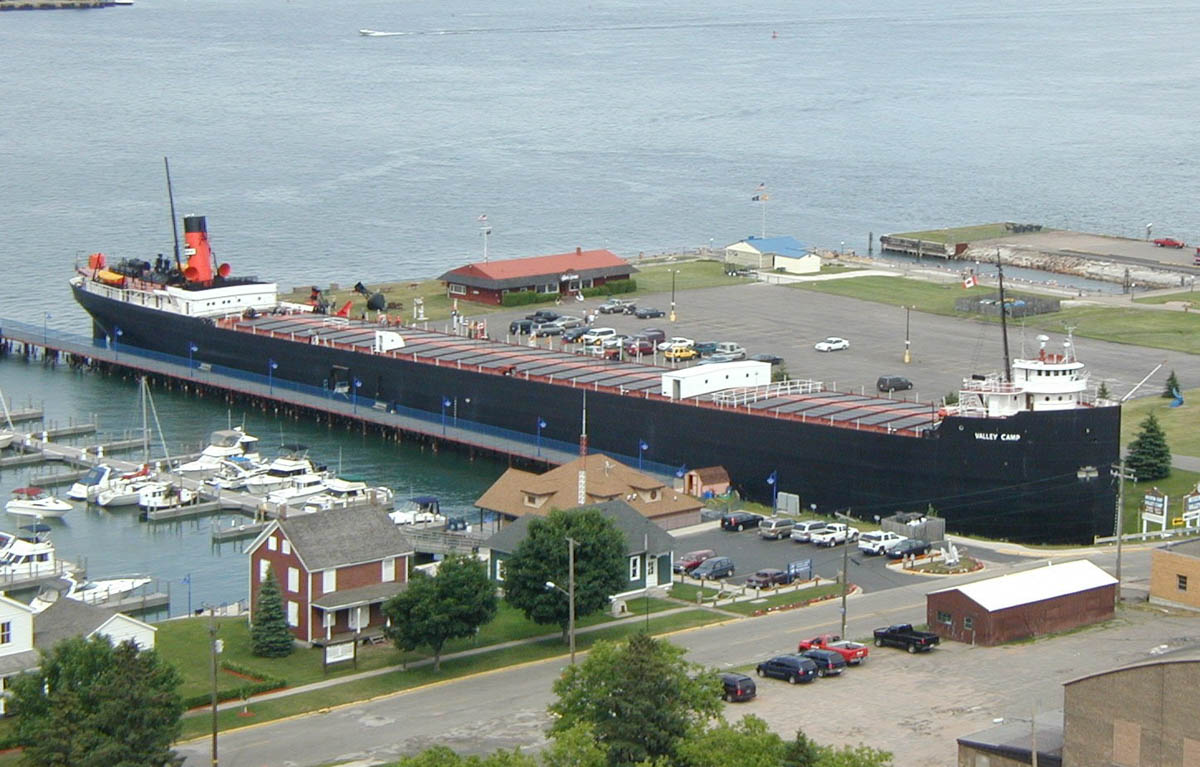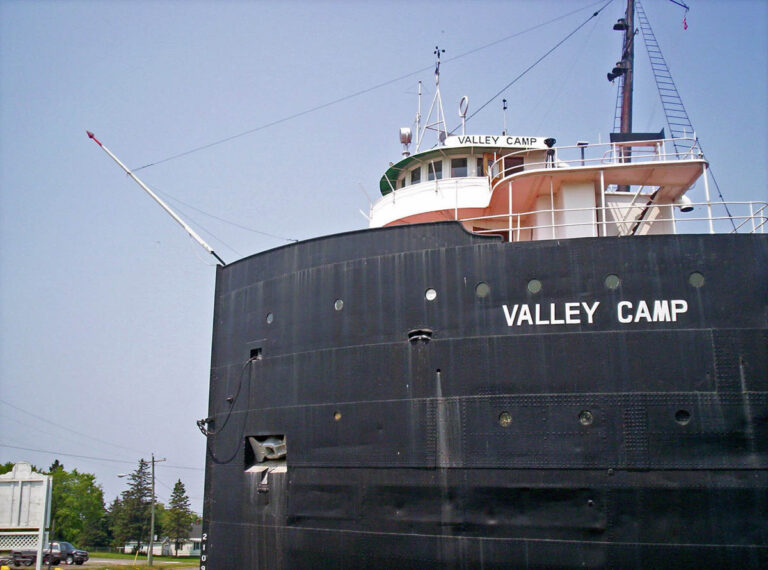SS Valley Camp, a lake freighter that spent over 50 years operating on the Great Lakes, is currently housed as a museum ship in Sault Ste. Marie, Michigan.
History
Originally known as Louis W. Hill for the National Steel Corporation, Valley Camp was established in 1917 in Lorain, Ohio. Before being sold to the Wilson Marine Transit Company in 1955, she spent 38 years hauling coal and iron ore for this company. She was given her current name while serving in this fleet. She transported a broader range of bulk commodities, such as stone and grains, for this enterprise. Only until 1959, when the Republic Steel Corporation acquired Valley Camp and a number of her Wilson Fleet colleagues, including her identical sister ship Silver Bay (originally Albert Heiken of National Steel), did she remain a part of the Wilson Fleet. She transported coal and iron ore to Republic’s mills in Indiana Harbour, Indiana, Buffalo, New York, and Cleveland, Ohio. Republic retained the name Valley Camp. Valley Camp sailed for the last time in 1966. She was taken out of service because of issues with her boilers that burned coal. Silver Bay, her twin, continued to sail until the early 1980s.
On July 6, 1968, during Sault Ste. Marie’s tri-centennial celebration, the ship, which cost $10,000, was towed from Wisconsin to Sault Ste. Marie by Le Sault de Sainte Marie Historical Sites, Inc. As a museum ship, Valley Camp is listed on the National Register of Historic Places. In addition to exploring the ship, guests can take in the hundreds of antiques, artworks, shipwreck finds, models, two lifeboats from the SS Edmund Fitzgerald, and exhibits of maritime history artifacts in the cargo hold.

The Ship
With a 525-foot (160 m) keel, Valley Camp is 550 feet (170 m) long overall. She is 31 feet (9.4 meters) deep and has a beam of 58 feet (18 meters). She can carry 12,000 gross tons at a time. She still uses the same triple expansion reciprocating steam engine that produced 1,800 horsepower (1,300 kW) to propel the ship. Never the flagship of the fleet, her quarters were modest yet comfortable. The crew quarters have basic bunks with wood trim lining them. The wheelhouse has brass trim and wood lining. She still has her original steering wheel. She still has her original smokestack and double-chime whistle at the stern.
Relatively untouched from her initial design, she is the best preserved illustration of the traditional Great Lakes ore haulers, which were once in their hundreds and just a handful still exist today.
People can visit Museum Ship Valley In Ste. St Marie and tour the Valley Camp. Visitors have access into the Engine Room, the Upper Deck to see crew quarters and the pilot house. They are open from mid May to mid October.






